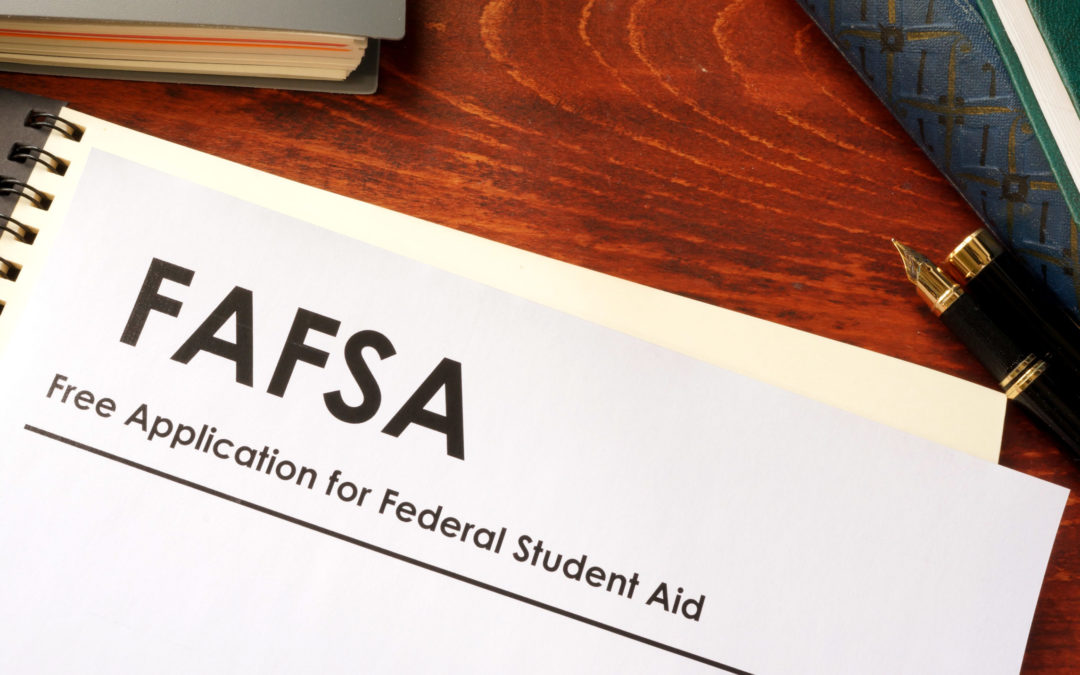Billions of dollars of federal aid is given out to students across the country every year. The only way for your student to receive any of this money is by filling out the Free Application for Federal Student Aid, also known as FAFSA. Schools use the information they receive from this application to gauge a student’s eligibility for financial aid.
Completing the FAFSA means your child will be eligible for:
Grants: Money from federal and state governments based on financial need. Grants are a form of financial aid that, in most cases, does not need to be repaid.
Scholarships: Merit-based financial aid given to students. While some believe that means eligibility is not connected to the FAFSA, many scholarships offered by community colleges and universities require applicants to have it completed. Again, this is “free money” that doesn’t need to be repaid in most cases.
Work-study: Work-study allows students to work part-time on campus and use their earnings to pay for their tuition or other expenses. Those who fill out the FAFSA are considered to participate in work-study if they meet a certain criteria.
Federal Student Loans: All students who plan on taking out student loans are required to complete the FAFSA. One perk is that federal student loans are often more affordable and offer better benefits than private loans.
Filling out the FAFSA is crucial in securing money to fund your child’s education, so it’s extremely important that it’s completed correctly and turned in on time. If you’re not well-versed in the FAFSA, this is easier said than done as it’s notoriously long and confusing.
It may seem overwhelming, but don’t let its bad reputation scare you. Taking just a little bit of time to educate yourself on common FAFSA mistakes will put you in a much better position to avoid any missteps or headaches.
1. Not filling it out.
Some choose not to fill the FAFSA out because they believe they won’t be eligible for any money. Thinking like this can actually cost you money! As they say, nothing ventured, nothing gained. Without giving it a shot, you’ll never know what your child could receive. Even if it’s lower than the amount you were hoping for, it’s still money. Plus, you may be pleasantly surprised by what you may get.
2. Not preparing beforehand.
Before you do any other prep, you need to create a FSA ID. This is the online ID you use to login and complete the FAFSA, as well as access financial aid information.
Next, gather the documents required to complete the application. Preparing beforehand can expedite the process immensely. These documents include:
- Social Security card for both parent and student.
- Alien registration number (if you’re not a U.S. citizen).
- Federal tax returns, W-2s, 1099s or any other records of the money you’ve earned. (Note: you can use the IRS Data Retrieval Tool to access these documents online).
- Driver’s licenses (if applicable).
- Bank statements such as savings and checking account balances.
- Records of any investments.
- Records of untaxed income (if applicable).
If you start the application and realize you don’t have one of these documents, don’t worry! You can save your progress, log out and complete it at a later date.
3. Not filing as soon as possible.
A lot of grants and scholarships offered through states and colleges are first-come, first-served. This is a major reason you don’t want to wait until the last minute to complete the FAFSA. The earlier you complete and submit it, the higher your chances are at receiving financial aid. Getting it done as soon as possible also means you won’t miss any deadlines!
4. Only filing once.
Filing the FAFSA is not something you only do once. There’s a common misconception that once your child’s college of choice has their FAFSA information, it’s good for the entirety of their time there. However, it needs to be submitted each year your child is attending college, even if your information or financial situation has not changed.
That being said, it does get less time consuming after the first time. Because you will already have your FSA ID account set up, your information will be pre-filled and waiting for your confirmation or any updates at the time of renewal.
5. Not filing an appeal if your financial situation has changed.
If families experience any loss in income due to job loss, reduction in hours, extensive medical expenses or large costs for dependents such as elderly parents or special needs children, there’s an option to appeal for more financial aid even after submitting the FAFSA.
Completing this form allows the college your child is already attending, or colleges they’re interested in, to reevaluate their financial needs. A best practice is contacting the college’s financial aid office to see what information they’ll need to start the appeal process.
6. Not finding help if you need it.
Correctly completing the FAFSA is crucial to securing financial aid. If you’re not confident in your ability to do so, the best option is to find help! Seeking the counsel of someone who knows what they’re doing is better than guessing and making simple errors.

Recent Comments